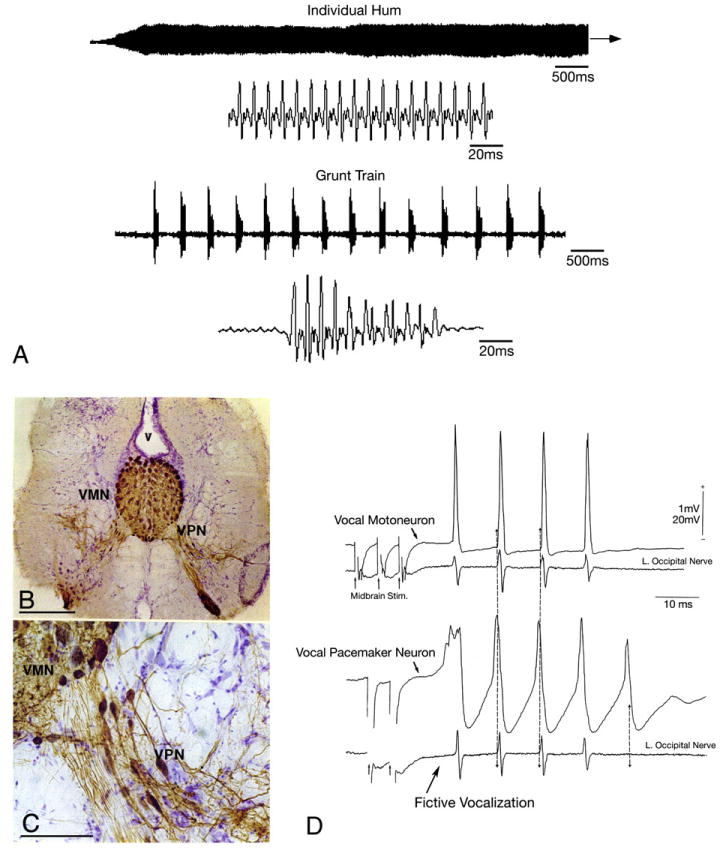Fig. 2.

Vocal behaviors and central pattern generator (CPG) in the plainfin midshipman fish, Porichthys notatus. (A) Oscillograms of a long duration advertisement hum and a train of brief duration agonistic grunts on two time scales (adapted from Bass et al. 1999 and 2005a,b with kind permission of Springer Science and Business Media). (B, C) Vocal CPG morphology (adapted from Bass et al., 1996). Following application of biocytin to the cut end of the vocal nerve that innervates a single vocal muscle, both the midline vocal motor nucleus (VMN) and the adjacent column of pacemaker neurons (VPN) are labeled bilaterally (v, fourth ventricle). Bar scale represents 300 μm in ‘A’ and 75 μm in ‘B’. (D) Vocal CPG physiology (adapted from Bass and Baker, 1990). Intracellular records from anatomically-identified vocal motor and pacemaker neurons following midbrain stimulation (each trace is average of four sweeps). Both intracellular (top) and intracranial (bottom; left vocal occipital nerve) records are shown. Small arrows at the beginning of the lower traces indicate onset of midbrain electrical microstimulation. The highly synchronous nerve discharges were aligned (vertical lines) to show relative timing between pacemaker and motoneuron firing. Time scale and direction of polarity for all records are indicated.
